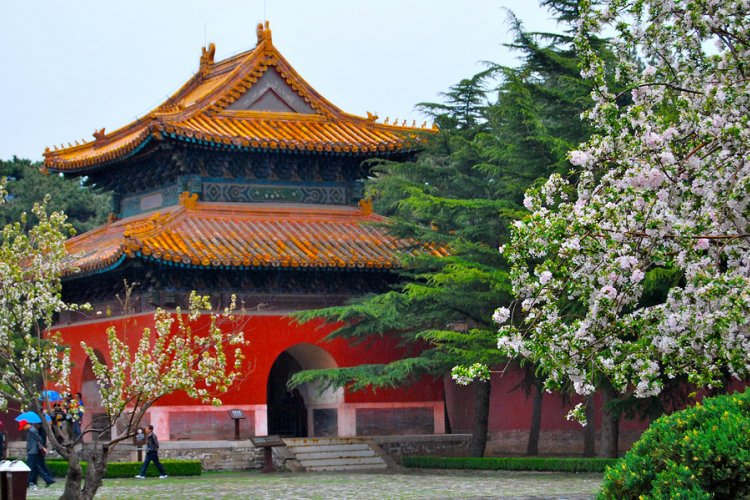Beijing Bucket List: Lama Temple
In my five-plus years in Beijing, I'd somehow never gotten around to visiting the Lama Temple (Yonghegong). Maybe it was because I lived in the neighborhood and figured I'd see it sooner or later, or maybe it was because I'd traveled to Tibet with my family as a teen and didn't think a Beijing-based lamasery could live up to the Potala Palace. Two weeks ago, I finally popped in for a look.
Originally founded in 1694 to house imperial eunuchs, Yonghegong eventually served as the court of Prince Yinzhen, the fourth son of the Kangxi emperor as well as the future Yongzheng Emperor.
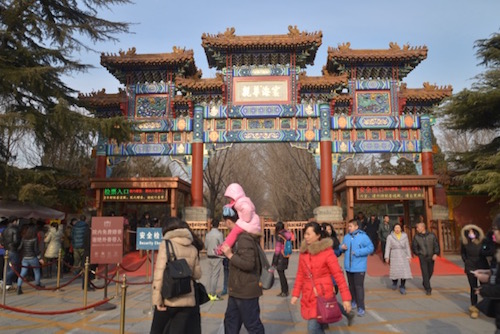
When Yinzhen ascended the throne in 1722, half of the building was converted into a lamasery for Tibetan Buddhist monks and the other half remained an imperial palace. Upon his death in 1735, his coffin was laid to rest at the temple. His son, the Qianlong Emperor, granted Yonghegong imperial status by upgrading the complex's turquoise roof tiles to yellow, a color reserved for the emperor.
Yonghegong continued to grow in importance as a center for Tibetan Buddhist administration. After the Chinese Civil War of 1949, the lamasery was closed for over 30 years, reportedly surviving the Cultural Revolution thanks to the intervention of Premier Zhou Enlai. Yonghegong was reopened to the public as a tourist attraction in 1981.
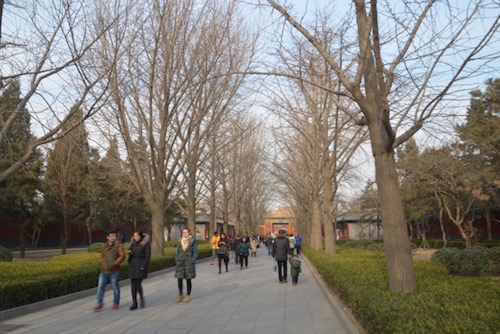
Yonghegong is laid out north to south. The ticket office is to the right of the large paifang (archway) that marks the entrance to the complex. After a tree-lined walkway, visitors will reach the Zhaotai Gate:
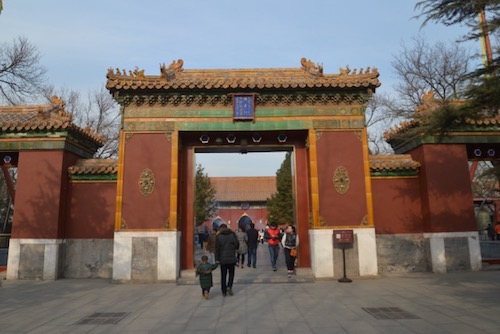
Past the gate, the first important building you'll see is the Yonghe Gate, also known as the Hall of Heavenly Kings (天王殿). Technically, you're still outside the main complex. Feel free to have a look around, but make sure not to get between the incense burners and the devout seeking blessings.
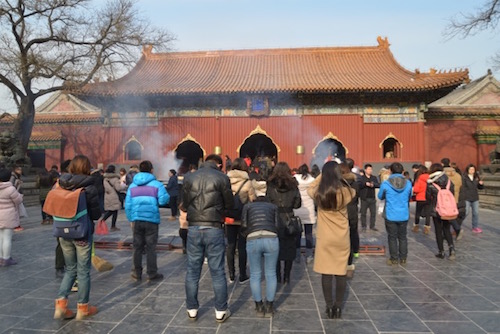

After the Yonghe Gate, you'll pass in quick succession Yonghe Hall (永和殿) – the complex's main building – and Yongyou Hall (永佑殿). Yonghe Hall contains a trio of bronze statues representing the Buddhas of the Three Ages, some of the Lama Temple's most prized artifacts.
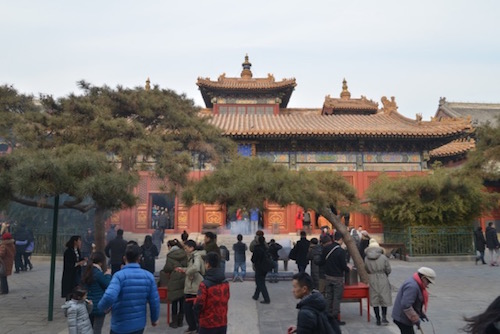
The next building, the Hall of the Wheel of the Law (法轮殿) is used for reading scripture and holding religious ceremonies. It contains another one of the temple's main attractions, the Five-Hundred Arhat Hill – 449, to be precise – made of red sandalwood and five different metals (gold, silver, copper, iron, and tin).
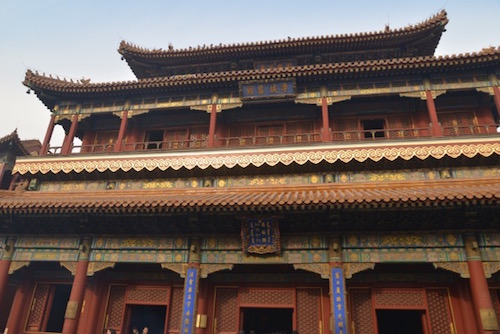

The most imposing structure was the northernmost Pavilion of Ten Thousand Happinesses (万福阁). We soon found out why it was so large.
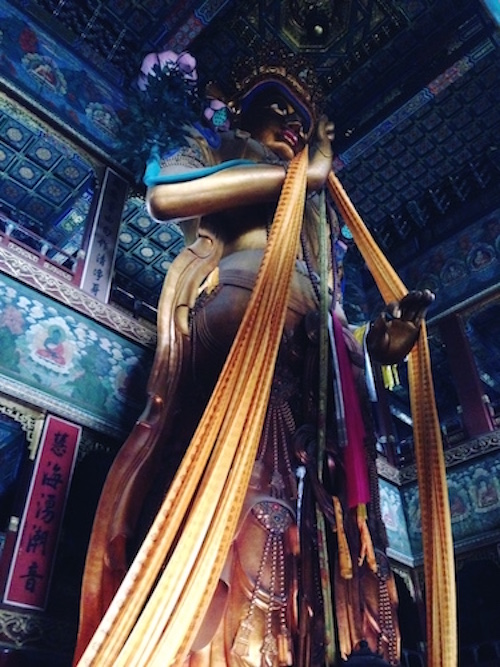
The pavilion houses the 18m-tall Maitreya Buddha, an 18m-tall statue carved from a single piece of white sandalwood documented in the Guinness Book of Records. The colossus extends 8m underground for stability, bringing the total length to 26m. The statue was a gift from the seventh Dalai Lama to the Qianlong Emperor and took three years to reach Beijing from Tibet.
We came across an exhibition of Tibetan Buddhist artifacts in one of the adjacent halls. There were many intricate and interesting pieces, including robes, ritual crowns, prayer wheels, mandalas, paintings, and kila (three-sided ritual daggers or pegs).

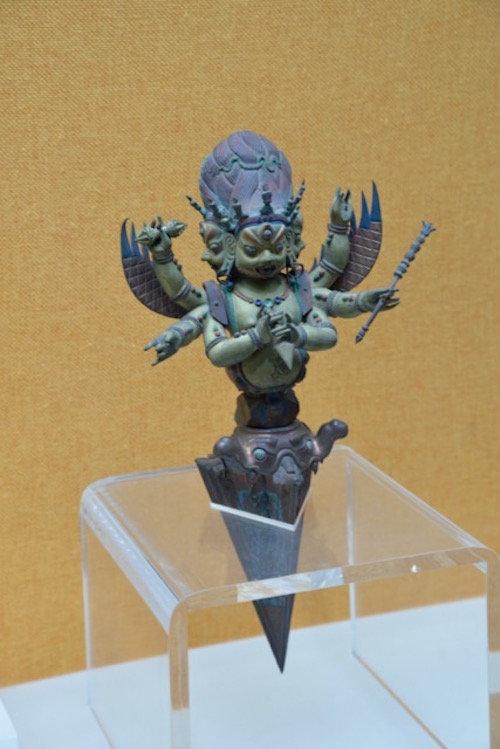
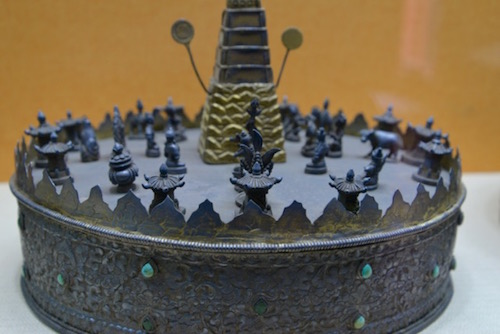
All in all, Yonghegong was a pleasant way to spend an hour or so. Though the complex doesn't compare to grander lamaseries in Tibet or Qinghai, it offers the Beijing-bound an opportunity to see Tibetan Buddhist artifacts and structures.
Remember to bundle up if you're visiting in winter; though the halls and pavilions offered some respite from the cold, the entrances to each building were still wide open. Head to nearby Wudaoying Hutong afterwards for a hot drink or some food.
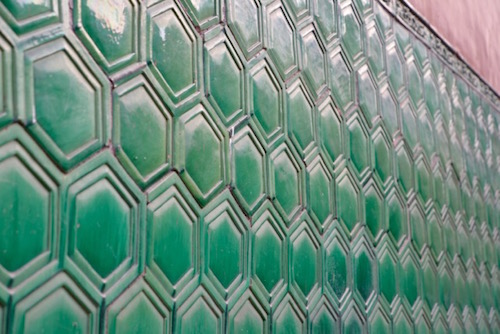
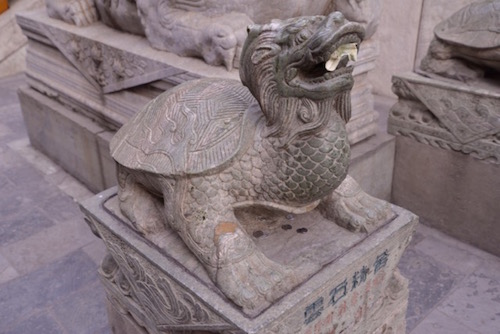
If you read Chinese, this is the best map of Yonghegong I've found so far.
Yonghegong Lama Temple 雍和宫
RMB 25. Daily 9am-4.30pm. 12 Yonghegong Dajie, Dongcheng District (6404 4499)
东城区雍和宫大街12号
Read the Sijia's previous editions of Beijing Bucket List here. This article originally appeared on our sister site beijingkids.
Photos: Sijia Chen
Related stories :
Comments
New comments are displayed first.Comments
![]() luli888717
Submitted by Guest on Wed, 01/27/2016 - 10:52 Permalink
luli888717
Submitted by Guest on Wed, 01/27/2016 - 10:52 Permalink
Re: The Beijing Bucket List: Lama Temple
Thank you so much for your post . I never been there before . It is worthy to have a look . your blog is vivid by the way . thank you so much .
Validate your mobile phone number to post comments.




